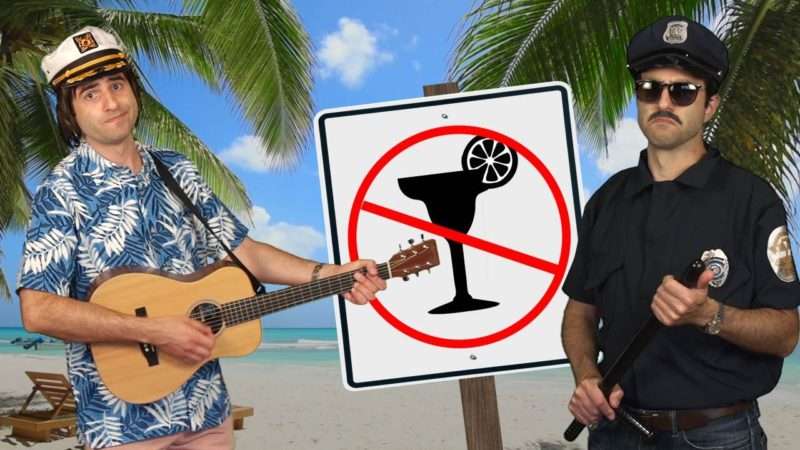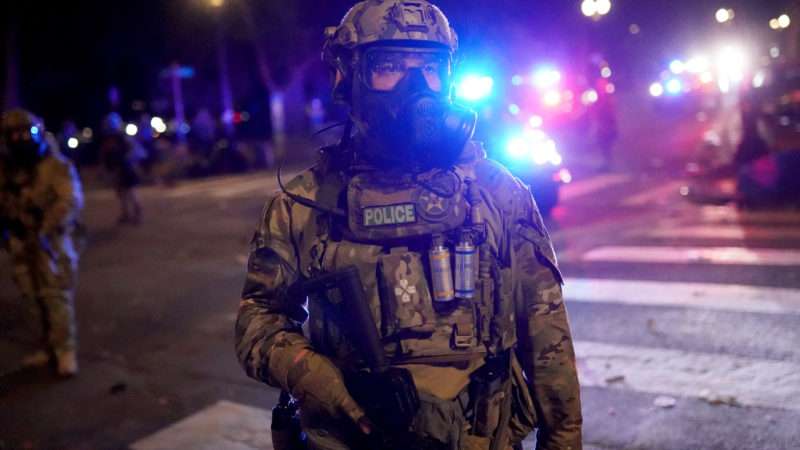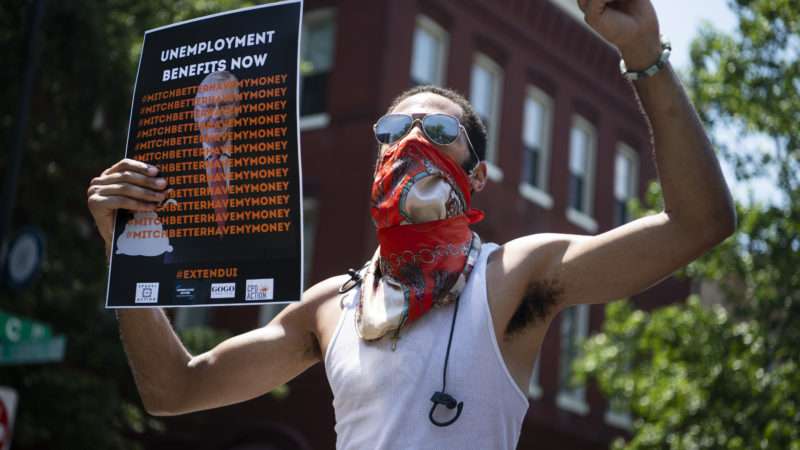[This is a serialization, with slight updates, of my 2012 article on the subject; for the Introduction (which also discusses my ambivalence about such laws), see this post.]
I talked earlier about laws that seem to protect a broad range of employee speech; now we turn to ones that seem to be narrower, either because they protect “political opinions” without discussion speech or political activity, because they protect only party affiliation, or because they protect only election-related activities.
[A.] Holding Political Opinions or Beliefs—New Mexico, (to Some Extent) Montana, and Harford, Howard, and Prince George’s Counties (Maryland) and Lansing (Michigan)
New Mexico bars discrimination based on “political opinions.” This could be read broadly, to include discrimination based on speech expressing political views, or narrowly to include only discrimination motivated by disapproval of an employee’s beliefs and to exclude discrimination motivated by worry that the employee’s speech expressing those beliefs is disruptive to the business.
New Mexico: [It is a felony for any employer of an employee] entitled to vote at any election, [to] directly or indirectly discharg[e] or threaten[] to discharge such employee because of the employee’s political opinions or belief[s] or because of such employee’s intention to vote or refrain from voting for any candidate, party, proposition, question, or constitutional amendment.
[It is a felony for any employer of an employee] entitled to vote at any [municipal] election [to] directly or indirectly discharg[e] or penaliz[e] or threaten[] to discharge or penalize such employee because of the employee’s opinions or beliefs or because of such employee’s intention to vote or to refrain from voting for any candidate or for or against any question.
Harford County, Howard County, and Prince George’s County (all in Maryland, and containing about ¼ of the state’s population) also ban discrimination based on “political opinion,” defined as “The opinion of persons relating to government or the conduct of government or related to political parties authorized to participate in primary elections in the state.” Lansing, Michigan, bans discrimination based on “political affiliation or belief,” without defining the terms.
Montana also imposes a similar rule for government contractors, and for health care facilities (including private facilities); the language seems broad enough to bar both discrimination against patrons and discrimination against employees or applicants for employment:
Montana: Every state or local contract or subcontract for construction of public buildings or for other public work or for goods or services must contain a provision that all hiring must be on the basis of merit and qualifications and a provision that there may not be discrimination on the basis of race, color, religion, creed, political ideas, sex, age, marital status, physical or mental disability, or national origin by the persons performing the contract.
All phases of the operation of a health care facility must be without discrimination against anyone on the basis of race, creed, religion, color, national origin, sex, age, marital status, physical or mental disability, or political ideas.
The Montana Constitution provides that “Neither the state nor any person, firm, corporation, or institution shall discriminate against any person in the exercise of his civil or political rights on account of race, color, sex, culture, social origin or condition, or political or religious ideas,” but it’s not clear whether the ban on discrimination “in the exercise of … civil … rights” include discrimination in employment.
[B.] Belonging to, Endorsing, or Affiliating With a Political Party—District of Columbia, Iowa, Louisiana, Puerto Rico, Virgin Islands, Broward County (Florida), Urbana (Illinois)
These laws bar employers from discriminating against employees based on party membership. Most of them also bar discrimination based on the party that the employees “endorse” (D.C., Broward, Urbana) or “affiliate” with (Puerto Rico, Virgin Islands), which seems to cover speech expressing support for the party.
District of Columbia: [No employer may discriminate against employees or prospective employees] based upon the actual or perceived … political affiliation [defined as “the state of belonging to or endorsing any political party”] of any individual ….
Iowa: A person commits the crime of election misconduct in the first degree if the person willfully [i]ntimidates, threatens, or coerces, or attempts to intimidate, threaten, or coerce, a person … [t]o exercise [or not exercise] a right under chapters 39 through 53 [including declaring party affiliation, Iowa Code Ann. §§ 43.41-.42]. (For an explanation of why this statute, which generally bans threats, likely also applies to threats of loss of employment, see item 8 in this post.)
Louisiana: No person shall knowingly, willfully, or intentionally: [i]ntimidate …, directly or indirectly, any voter or prospective voter in … any matter concerning the voluntary affiliation or nonaffiliation of a voter with any political party.
Puerto Rico: Any employer who performs any act of prejudicial discrimination against [an employee because he is] … affiliated with a certain political party, shall be guilty … of a misdemeanor ….
Virgin Islands: It shall be an unlawful discriminatory practice … [f]or an employer, because of … [the] political affiliation of any individual, to refuse to hire or employ or to bar or to discharge from employment such individual or to discriminate against such individual in compensation or in terms, conditions or privileges of employment.
Broward County (Florida): It is a discriminatory practice for an employer: … [t]o fail or refuse to hire, to discharge, or to otherwise discriminate against an individual, with respect to compensation or the terms, conditions, or privileges of employment, because of a discriminatory classification [including “political affiliation,” defined as “belonging to or endorsing any political party”] … [except] where these qualifications are bona fide occupational qualifications reasonably necessary to the normal operation of that particular business or enterprise.”
Urbana (Illinois): It shall be an unlawful practice for an employer … [to discriminate against any employee or applicant] based wholly or partially on [an employee’s belonging to or endorsing any political party or organization or taking part in any activities of a political nature] … [except] where such factors are bona fide occupational qualifications necessary for such employment.
As an earlier post noted, Louisiana law also provides many employees protection against dismissal for political activities and not just for party membership.
[C.] Engaging in Electoral Activities—Illinois, New York, Washington
New York and Washington expressly bar employers from discriminating against employees for their election-related speech and political activities. (For more on another New York provision that may be relevant in non-election-related cases, see here.) Illinois law would likely be interpreted the same way, given the likelihood that threats of dismissal from employment would qualify as “intimidation” or “threat.”
Illinois: Any person who, by force, intimidation, threat, deception or forgery, knowingly prevents any other person from (a) registering to vote, or (b) lawfully voting, supporting or opposing the nomination or election of any person for public office or any public question voted upon at any election, shall be guilty of a … felony [and shall be subject to civil liability].
New York: (1) (a) “Political activities” shall mean (i) running for public office, (ii) campaigning for a candidate for public office, or (iii) participating in fund-raising activities for the benefit of a candidate, political party or political advocacy group … .
(2)(a) [No employer may discriminate against an employee or prospective employee because of] an individual’s [legal] political activities outside of working hours, off of the employer’s premises and without use of the employer’s equipment or other property [except when the employee is a professional journalist, or a government employee who is partly funded with federal money and thus covered by federal statutory bans on politicking by government employees] … .
(3)(a) [This section shall not be deemed to protect activity which] creates a material conflict of interest related to the employer’s trade secrets, proprietary information or other proprietary or business interest …
(4) [A]n employer shall not be in violation of this section where the employer takes action based on the belief … that: … (iii) the individual’s actions were deemed by an employer or previous employer to be illegal or to constitute habitually poor performance, incompetency or misconduct.
Washington: No employer … may discriminate against an … employee … for … in any way supporting or opposing [or not supporting or opposing] a candidate, ballot proposition, political party, or political committee.

from Latest – Reason.com https://ift.tt/304iV2W
via IFTTT



